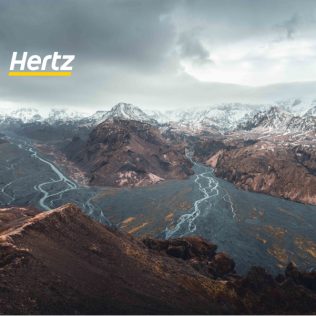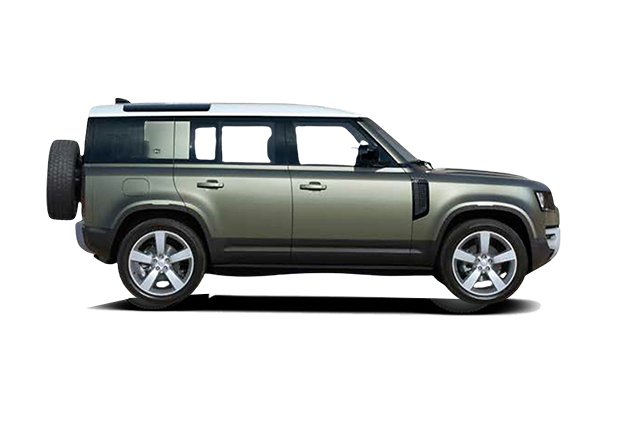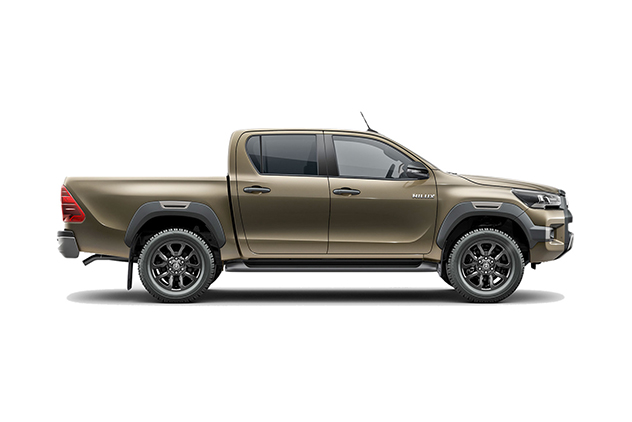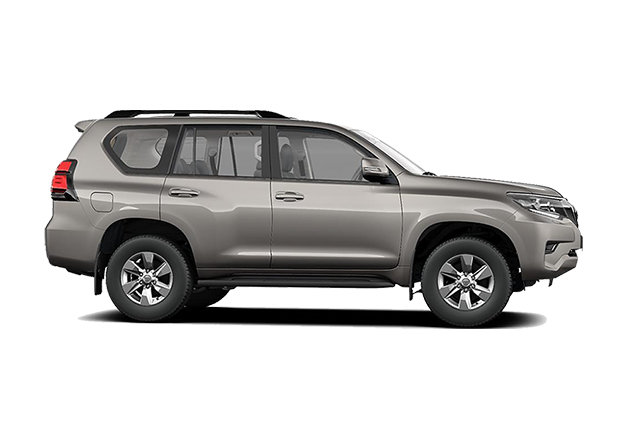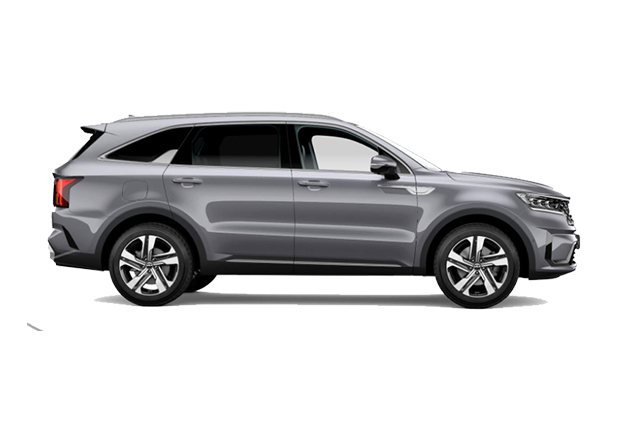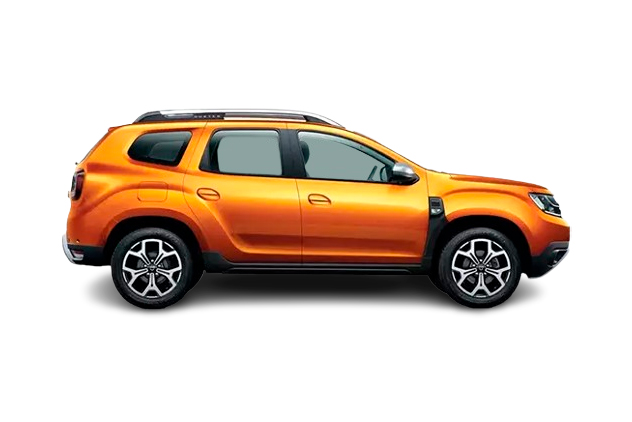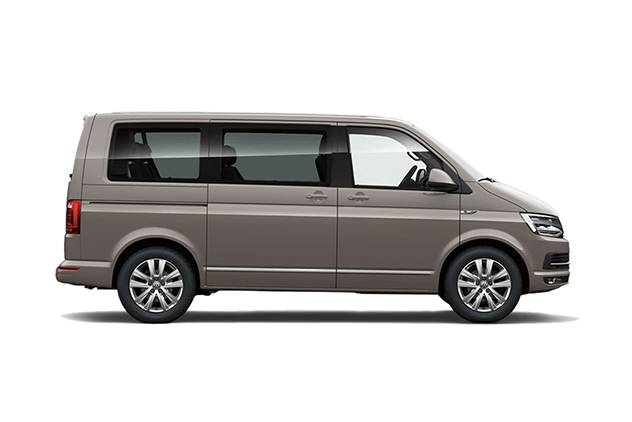Planning to explore the rugged and remote Icelandic Highlands? You’ll likely need to navigate the island’s iconic mountain roads, known as F roads. These highland routes are marked by gravel surfaces, river crossings, and breathtaking scenery, and they are only accessible with a proper 4×4 vehicle during the summer months. In this guide, we’ll break down everything you need to know about F roads in Iceland: how to drive them, when they’re open, what car you need, and where they can take you. You’ll also find a handy F road Iceland map to help plan your route safely.
Whether you’re venturing to Landmannalaugar, Þórsmörk, or Askja, understanding how Iceland F roads work is essential for a successful self-drive adventure. Let’s dive in and get you road-trip ready.
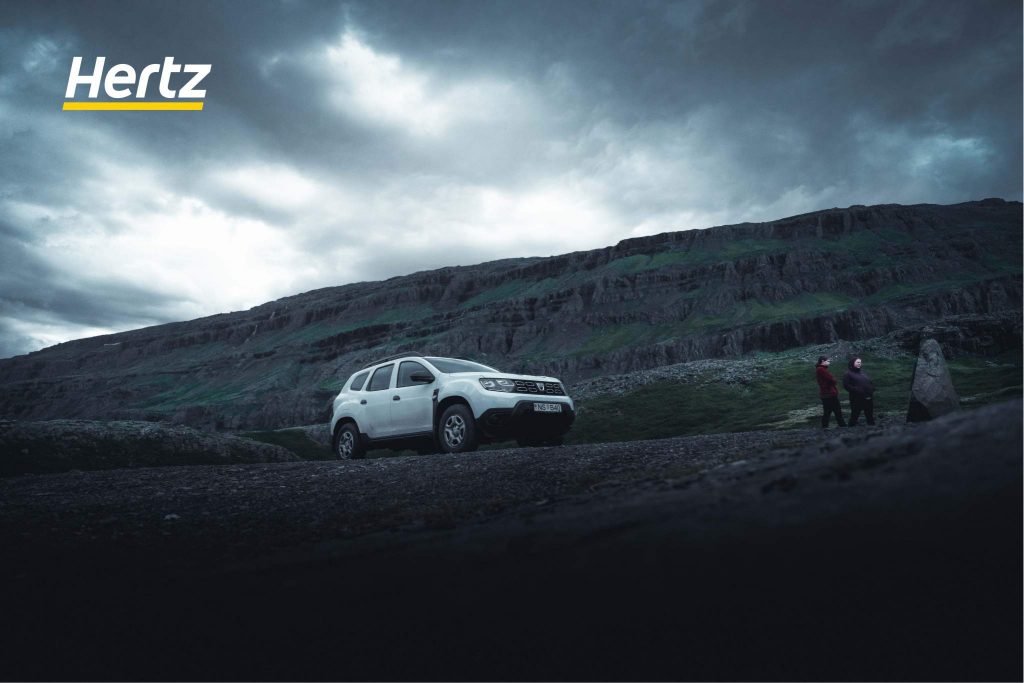
Table of Contents
- What Are Iceland F-Roads?
- F-Roads Iceland Map
- Iceland F-Roads Open and Closing Times
- Best Time to Drive on F-roads
- Popular F Roads in Iceland
- What Rental Car Do You Need?
- River Crossings
- Landmarks Only Accessible by F Roads
- Tips for Driving on F Roads in Iceland
- Frequently Asked Questions
What Are the Iceland F-Roads?
Iceland F-roads are unpaved mountain roads that provide access to the Icelandic Highlands and other remote areas. The “F” stands for “Fjalla,” meaning “mountain” in Icelandic. These roads, marked with an “F” before the number (like F208 or F26), often feature gravel, rock, sand, and sometimes unbridged river crossings.
Driving on F roads requires a 4×4 vehicle by law, and these routes are only open seasonally (usually from June to September) depending on weather conditions. Though they can be challenging, they offer access to some of the country’s most spectacular and untouched natural beauty.
While these roads are wild and scenic, they can also be unpredictable. Many F-roads are filled with loose gravel, sharp rocks, or steep climbs, and some even require your car to ford rivers. This is not a casual Sunday drive, it’s an adventure that requires awareness, preparation, and respect for Iceland’s rugged terrain.
F-Roads Iceland Map
The Icelandic Road and Coastal Administration is your go-to resource for the most up-to-date F-road information. Their website (road.is) provides regularly updated maps showing current conditions and road closures – think of it as your crystal ball for Highland road conditions!
Pro tip: Use the map to plan your route and check F-road status throughout your trip. Conditions can change quickly in Iceland’s highlands, so it’s worth checking before you head out each day.
Want to see the full picture? Click on the image below ?and get access to interactive map from the Icelandic Road and Coastal Administration to access their live system. This shows all F-roads across Iceland with real-time status updates – it’s like having traffic control in your pocket!
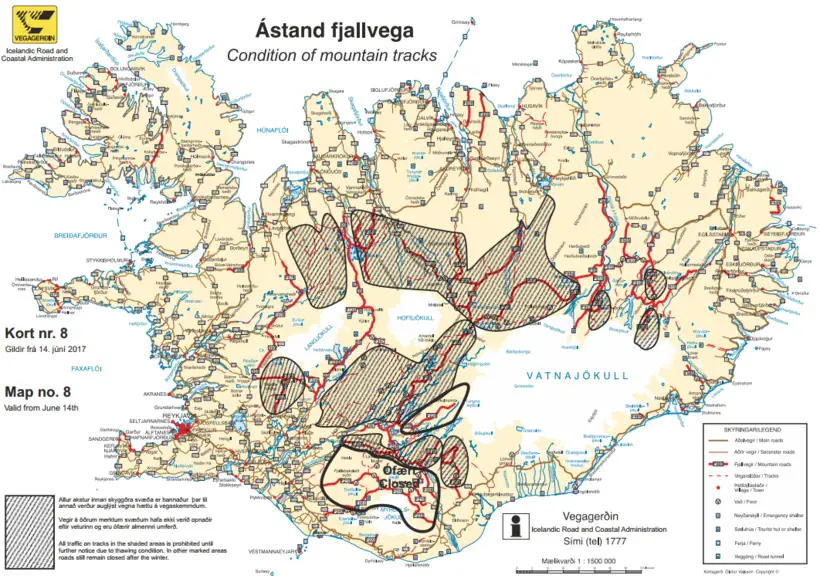
At Hertz Iceland, we always use the official map provided by the Icelandic Road and Coastal Administration to identify where Iceland’s F-roads are and to check their real-time status. The still map image shown here is created by the authority as a general reference, but please note it is not updated as frequently as the live interactive map. For the most accurate and current information on which roads are classified as F-roads—and their conditions—always consult the interactive map on the official website. This helps avoid confusion, as there may be newly designated or temporarily unlisted F-roads that do not yet appear in the static image. We recommend double-checking the interactive system before traveling to make sure you’re driving on approved routes and understand what counts as an F-road.
When Do F-Roads Open and Close?
F roads typically open in mid to late June and close by early October, but this varies year to year based on snow melt and Iceland road conditions. Some routes, like F35 (Kjölur), open earlier than more remote or rugged roads like F249 to Þórsmörk. Below you’ll find the most recent estimated opening dates from The Icelandic Road and Coastal Administration. These dates are flexible and depend on rainfall, snowpack, and river conditions. A late spring or early storm can delay openings for weeks, so always check road.is for real-time updates before traveling.
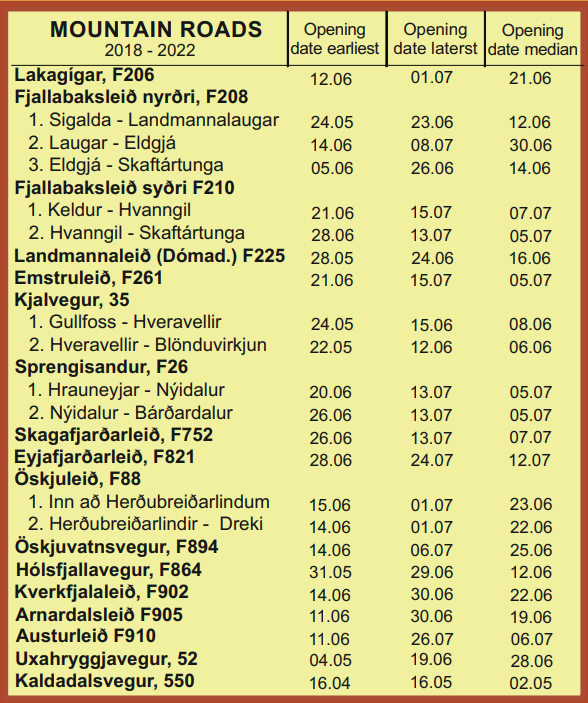
Best Time to Drive on F Roads in Iceland
The best time to drive F roads in Iceland is July through early September. These months offer the warmest weather, the longest daylight hours, and the highest chances that all F roads will be open. However, weather in Iceland is unpredictable, so it’s still possible to encounter rain, fog, or even snow at higher elevations.
Sunlight hours are long in summer, which helps make driving in remote areas safer. But even in July, conditions can change quickly, so always be flexible with your plans and build in extra time.
Driving F roads during winter in Iceland is not permitted unless you are part of a guided super jeep tour with a licensed operator. These tours use specially equipped vehicles that can handle closed roads and severe weather. Even in summer, guided tours remain a great option for those who prefer not to handle river crossings or off-grid navigation on their own.
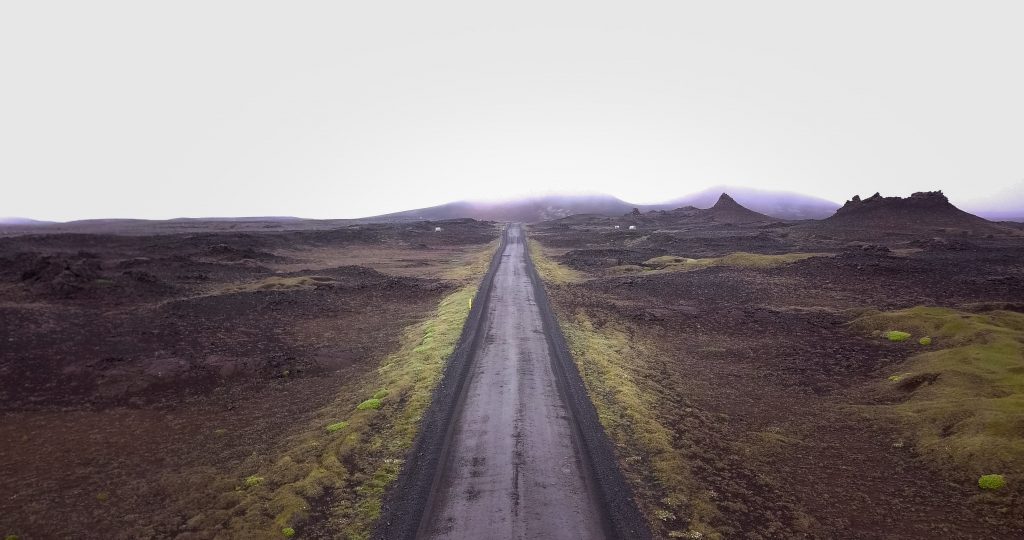
Popular F Roads in Iceland & Where They Lead
Some F roads are more frequently used by travelers due to their access to iconic landmarks. Here’s a more detailed look at a few key routes:
- F249 to Þórsmörk: This short but challenging route leads to one of the country’s most beautiful hiking areas, nestled between glaciers. River crossings can be particularly deep and unpredictable, so many travelers opt for guided super jeep tours.
- F35 (Kjölur Route): This is one of the most accessible F-roads and doesn’t involve river crossings. It connects Gullfoss with North Iceland and passes by Hveravellir, a geothermal area with hot pools and hiking trails. The road has had improvements over recent years, so it’s been reclassified. However, it’s still labeled F35 on Google Maps.
- F26 (Sprengisandur): The longest F-road in Iceland, stretching all the way through the desolate central Highlands. It connects the north to the south, offering an isolated and dramatic landscape for confident adventurers.
- F88 to Askja: Known for its rough terrain and river crossings, this route leads from the Iceland Ring Road to the otherworldly Askja Caldera and Víti Crater. The scenery is lunar-like and incredibly remote, ideal for geological photography and solitude seekers.
- F210 (Fjallabaksleið Syðri): A lesser-traveled but incredibly scenic route that runs parallel to the now-paved F208. This rugged route offers access to hidden highland areas and connects to Landmannalaugar via rougher terrain and challenging river crossings. Ideal for experienced drivers seeking adventure and solitude.
F Roads Chart: Route, Landmarks & Difficulty
| F-Road | Region | Main Landmark | River Crossings | Difficulty |
|---|---|---|---|---|
| F26 | Central Highlands | Nyidalur, Sprengisandur | Yes | Hard |
| F210 | South Highlands | Landmannalaugar via Fjallabaksleið Syðri | Yes (Multiple) | Hard |
| F35 | Central Highlands | Hveravellir, Gullfoss | No | Easy |
| F249 | South | Þórsmörk | Yes (Deep) | Hard |
| F88 | Northeast | Askja Caldera | Yes | Moderate–Hard |
| F905/F910 | Northeast | Askja, Holuhraun | Yes | Hard |
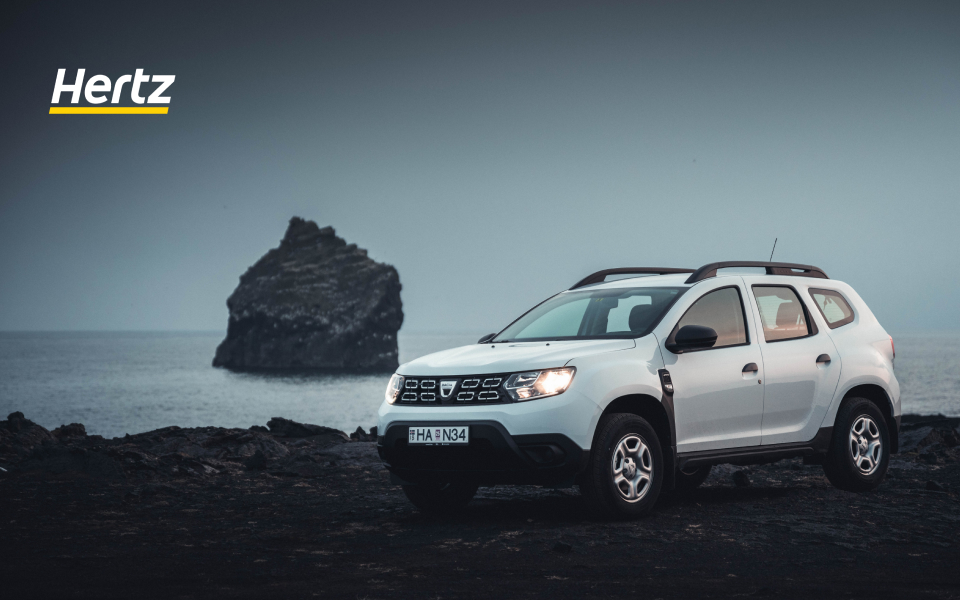
What Rental Car Will You Need for F-Roads?
By law, you must have a 4×4 vehicle to drive on F roads. Hertz Iceland provides a range of 4X4 car rentals that are fully equipped for Iceland F road travel. If you’re not confident in your driving skills, or if you don’t have much experience in driving 4×4 Jeeps, consider going for a local tour instead. Some great options are the budget-friendly Landmannalaugar bus tour or Þórsmörk Super Jeep tour.
- You can also find and book your Iceland highland tours with our partners.
If you’re confident in your driving skills and ready for a self-drive adventure, then here are some different rental car options to navigate Iceland F roads.
1. Affordable Car Rental
A compact 4×4 like the Suzuki Jimny or Dacia Duster can handle smoother F-roads (like F35), but may not be suitable for those with significant river crossings. These are budget-friendly but limited in capability.
- Related Link: Cheap economy rental car in Iceland
2. Mid-Range Options
The Kia Sportage or similar offers a comfortable ride, decent clearance, and enough space for families or groups. These vehicles can handle moderate terrain but may still struggle on the roughest routes.
- Related link: Mid-size rental cars in Iceland
3. Full-Size SUVs
Vehicles like the Toyota RAV4 offer stronger performance on gravel and rocky terrain, with better suspension and more confidence on longer F-road stretches.
- Related link: Full-size rental cars in Iceland
4. High-Clearance & Luxury
The Toyota Land Cruiser or Toyota Hilux are ideal for more rugged terrain and deeper river crossings. These are also preferred by locals for their durability and versatility.
When in doubt, ask your rental company which roads your vehicle is cleared for and avoid routes that exceed your comfort level.
River Crossings on F Roads in Iceland
Yes, many Iceland F roads involve river crossings. Some of these are shallow while others deep and fast-flowing. There are no bridges on most of these crossings. Never cross a river without first evaluating the depth and flow. If unsure, wait for another vehicle or turn around. Insurance rarely covers water damage, and poor judgment here is a major cause of vehicle damage.
Some tips for river crossings:
- Cross slowly and steadily in first gear.
- Avoid stopping in the water.
- Enter where the river is widest and shallowest.
- Never attempt a crossing after heavy rain.
Read more on our full guide to Iceland river crossings.
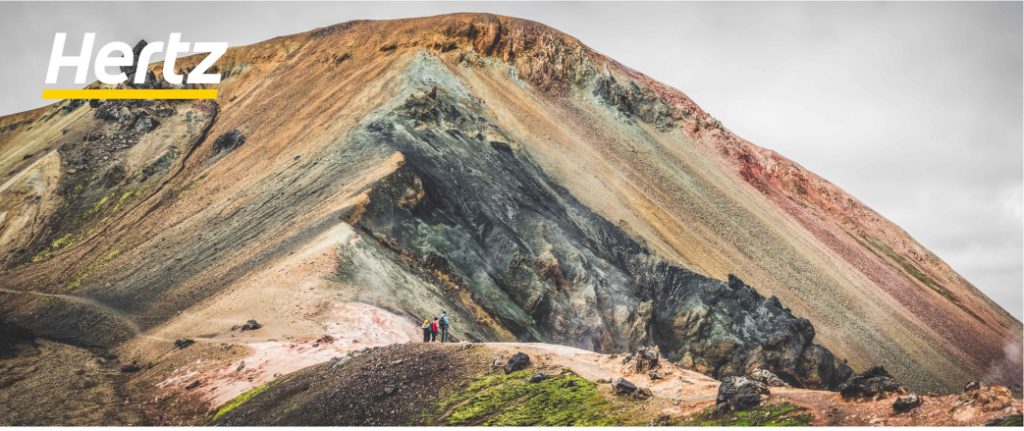
Landmarks That Require Iceland F Roads
Several bucket-list destinations in Iceland require F road access. Let’s explore what makes each one special:
- Landmannalaugar (F208): A highland treasure known for geothermal Iceland hot springs, colorful rhyolite mountains, and volcanic hiking trails like Laugavegur. Popular for backpackers and day hikers.
- Þórsmörk (F249): A nature reserve set between glaciers Mýrdalsjökull and Eyjafjallajökull. Famous for forested valleys, braided rivers, and hiking trails like Fimmvörðuháls and Laugavegur. Accessible only by crossing deep rivers.
- Askja (F88, F910): A remote caldera within Vatnajökull National Park. Home to Lake Öskjuvatn and the warm, milky-blue Víti crater. The moonscape surroundings were used by NASA to train Apollo astronauts.
- Hveravellir (F35): A highland oasis with geothermal hot springs, fumaroles, and hiking paths between two glaciers. A great stopover when crossing Iceland via the Kjölur route.
- Laki Craters (F206): A dramatic volcanic site formed during a massive 18th-century eruption. Accessible via rugged F-roads and part of the larger Vatnajökull National Park.
Tips for Driving on F Roads in Iceland
Driving through the F-roads Iceland can be rather tricky, so you need to be well-prepared. Here are some tips to keep in mind as you are trying to maneuver your way through the Icelandic roads.
1. Travel in Groups
Whenever possible, drive with at least one other vehicle. This creates a built-in safety net so if one car gets stuck in a river, has a flat tire, or experiences engine trouble, the other can provide assistance or go for help. In remote highland areas, a second car could save you hours of waiting or walking. If you’re traveling alone, consider renting a GPS distress beacon or satellite phone as an added precaution.
2. Keep it Slow and Steady
Iceland F-roads are not made for speed. You’ll often be navigating loose gravel, uneven surfaces, sharp turns, and narrow one-lane bridges. Keep speeds low (generally under 40 km/h) and your steering gentle. Sudden turns or braking can easily result in loss of control, especially on sand or wet gravel. Driving slow also helps you better assess river crossings and gives you time to react to unexpected conditions.
3. Understand Your Insurance Limitations
Standard rental insurance often doesn’t cover damage from river crossings, sand and ash storms, or damage to the car’s undercarriage. It’s important to ask your rental provider about available insurance upgrades and to read the fine print. If you damage the transmission by taking on a river that’s too deep or crack your oil pan on a rock, you could be fully liable. Never assume you’re covered.
4. Bring Extra Food and Drinks
When driving through Iceland’s highlands, prepare as if you might be stranded for several hours or more. Weather can change in minutes, and mechanical issues or river floods could delay you. Pack high-energy snacks, at least 2–3 liters of water per person, and emergency rations just in case. Don’t rely on roadside cafés, since they won’t exist on these roads.
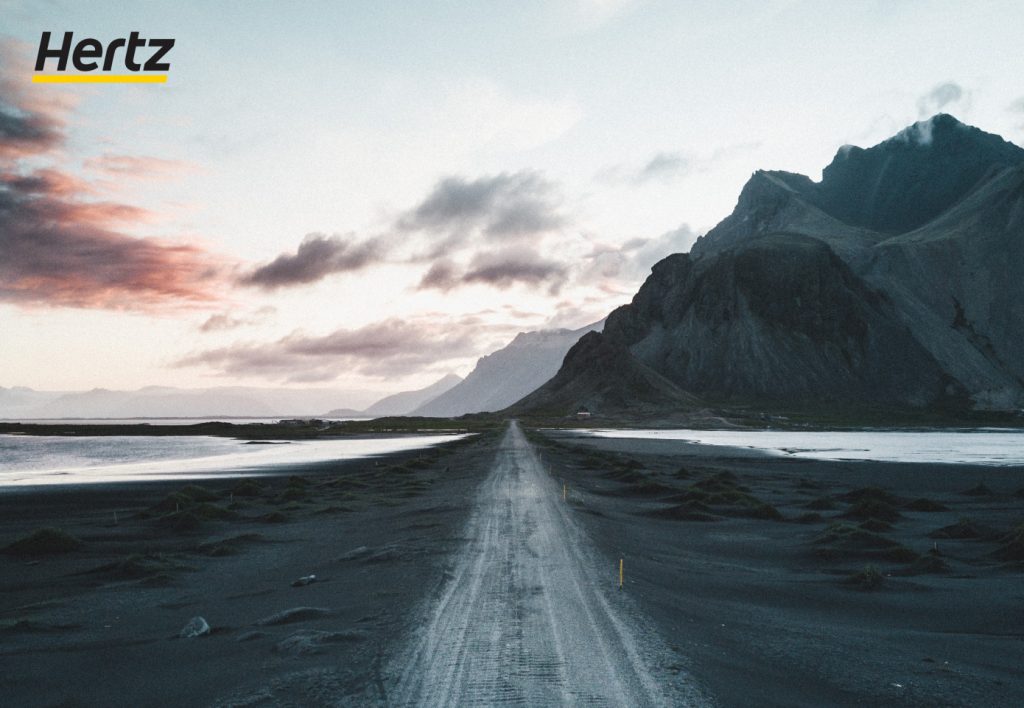
5. Check Road Conditions Daily
Even if you did your research a week before your trip, conditions can shift quickly. A previously dry river might now be impassable. Use road.is to monitor up-to-date conditions and closures. It’s also wise to speak with locals, rangers, or rental staff before heading out as they often know the terrain better than the internet does.
6. Have Emergency Contacts and Tools
The emergency number in Iceland is 112, and it works even with limited or no signal. Consider downloading the 112 Iceland app, which sends your GPS location automatically if you need help. Bring jumper cables, a spare tire, tire repair kit, and a flashlight with extra batteries. A small shovel can also be useful if you need to dig your tires out of a rut.
7. Prepare for All Types of Weather
Icelandic weather is famously unpredictable. A sunny morning can become a hailstorm by afternoon. Pack layers, waterproof outerwear, gloves, and a hat. Even if you’re just driving, you may need to walk to seek help or check a river crossing, so wear proper hiking shoes and be prepared to be outdoors.
8. Fill Up on Gas
The Highlands are vast, and fuel stations are few and far between. Hveravellir is the only highland station, and it doesn’t serve all routes. Fill your tank before leaving civilization, even if it’s half full, and consider carrying an extra fuel canister if your route is particularly remote (e.g., F26).
9. Stay on Marked Roads
Off-roading in Iceland is illegal and environmentally damaging. The moss and delicate tundra can take decades to recover from tire tracks. Always stay on marked F-roads, and don’t try to create new shortcuts or tracks. Stick to the path, both for legal and ethical reasons
Iceland F-Roads FAQs
-
- Are AWD allowed on Iceland F-roads?
AWD (All-Wheel Drive) vehicles are technically allowed on some F-roads, but they may not be suitable. F-roads are rugged mountain roads, often with river crossings and steep terrain, and the law requires a 4×4 vehicle (four-wheel drive with high clearance). Most AWD vehicles do not meet this standard, and using one could result in damage or denied insurance coverage. It’s best to rent a proper 4×4 if you plan to explore the F-roads.
- Are AWD allowed on Iceland F-roads?
-
- Is the Golden Circle in Iceland an F road?
No, the Golden Circle is not an F-road. It’s one of Iceland’s most popular tourist routes and is accessible year-round via well-maintained paved roads. You do not need a 4×4 vehicle to drive the Golden Circle.
- Is the Golden Circle in Iceland an F road?
-
- Do I need to drive on F-roads in Iceland?
Not necessarily. Most major attractions in Iceland, like the Golden Circle, the South Coast, and the Ring Road, can be accessed without driving on F-roads. However, if you want to explore Iceland’s Highlands or remote interior areas like Landmannalaugar or Askja, you’ll need to take F-roads, which require a 4×4 vehicle and extra preparation.
- Do I need to drive on F-roads in Iceland?
-
- Are the F-roads worth it in Iceland?
If you’re adventurous and want to explore Iceland’s raw, untouched interior, F-roads can absolutely be worth it. They lead to stunning highland destinations like Kerlingarfjöll, Þórsmörk, and Askja that you can’t access otherwise. But be aware: these roads are rough, only open in summer, and require a capable 4×4 and some driving experience.
- Are the F-roads worth it in Iceland?
-
- What is the most difficult road in Iceland?
Road 622, located in the Westfjords, is considered one of the most difficult and dangerous roads in Iceland. It’s extremely narrow, winds along steep cliffs with no guardrails, and is often in poor condition. While not an F-road, it’s more treacherous than many of them. Only experienced drivers in 4×4 vehicles should attempt it, and even then, only in good weather.
- What is the most difficult road in Iceland?
-
- How long does it take to drive F26 in Iceland?
Driving the full stretch of F26, also known as Sprengisandur, typically takes 7 to 10 hours, depending on weather, road conditions, and stops. It’s a long, remote route crossing Iceland’s interior from north to south and is only open during the summer months. Only high-clearance 4×4 vehicles should be used, and travelers should bring supplies and check conditions in advance.
- How long does it take to drive F26 in Iceland?
-
- Is 35 an F road in Iceland?
It depends on the section. Route 35 (Kjalvegur) becomes F35 when it enters the Highlands. The southern portion near Gullfoss is paved and accessible year-round, but the F35 segment, stretching across Kjölur, is a highland road requiring a 4×4 and is only open during the summer..
- Is 35 an F road in Iceland?
The Bottom Line
F roads in Iceland offer access to parts of the country that most travelers never see, including geothermal valleys, volcanic craters, glacier-fed rivers, and wide-open Iceland landscapes. But with this access comes the need for preparation, caution, and the right equipment. Before heading out, make sure you’ve booked a reliable 4×4 vehicle, have checked the latest road and weather conditions, and are fully stocked with the gear you need for a safe journey. These roads are unpredictable, so flexibility and good judgment are key.
The Hertz Iceland team is always here to help you choose the right rental and offer tips on F road navigation. Have questions about which 4×4 to rent for your F-road adventure? Reach out to us at hertz@hertz.is or visit our rental car guide.
